An Intimate World: Vermeer’s Fabric
Dutch master Johannes Vermeer was fascinated by fabric, and it informed the nature of his art on multiple levels. This significant connection to fabric began early in Vermeer’s childhood, through family connections to textiles, and it stayed with him for life. He spent his entire career exploring the way its draped, shimmering surface could add mysterious drama to his brooding interiors, and some think he even invented some of the rug, wall and textile patterns that featured in his most famous works of art. But the personal connection Vermeer had to fabric also allowed him to see something deeper in its symbolic potential, the way it could convey the intimate personal lives and private inner worlds of his sitters.
Little is known about Vermeer’s early life aside from some basic facts: he was born in the city of Delft in 1632, the son of Reynier Janszoon and Digna Baltens. Vermeer’s grandfather was a tailor, perhaps setting the stage for Vermeer’s father, who trained as a ‘caffawercker’, or ‘caffa worker’ who learned how to weave the sumptuous ‘caffa’ fabric made from a blend of silk with wool or cotton. Fabric at this time was a significant indicator of social status and wealth, and those who produced it earned admiration and respect.
Though we know little about Vermeer’s inner world, there is much in his art to suggest that his father’s career had a profound impact on the nature of his art. Vermeer frequently painted silky fabric much like the kind his father would have woven, exploring how it could lend depth of weight and character to his sitters and the interiors around them. Vermeer’s art also reflected the wealthy prosperity of Amsterdam during this time, when desirable fabrics and furs from Asia and North America were shipped in by the East India and West India Company.
It is hard to imagine Vermeer’s world-renowned Girl with a Pearl Earring, 1665, without the sumptuous blue and gold fabric headdress that makes her instantly recognisable, yet also shrouding her in an air of unknown mystery. Similarly, in The Love Letter, 1669-1670, the young woman in the centre of the scene is dressed in an indulgent swathe of yellow fabric with a silky satin sheen, emphasising her wealthy position as her intimate love affair quietly unfolds before our eyes. The large masterpiece The Art of Painting, 1666, shows an artist studying his muse, while she glistens in a dazzling silky cerulean blue gown as if demonstrating her high social standing to the world.
Richly detailed and ornately patterned fabrics decorate many of Vermeer’s paintings, as seen in The Procuress, 1656 and The Concert, 1665-66, where heavy drapes are painted with exquisite attention to detail, demonstrating Vermeer’s admiration for the precise art of making textiles. Professor John M. Montias, author of the celebrated biography Vermeer and his Milieu: A Web of Social History, 1989, has extensively researched Vermeer’s life, and believes many of these intricate textiles were in fact of Vermeer’s own invention, rather than observed from real life. He notes how this desire to create such patterns can be traced back to the weaving trade of Vermeer’s father, noting, “If, as I believe, Vermeer created patterns of his own in some of the rugs, tapestries, and leather wall coverings that he depicted, both the impulse and the skill may perhaps be traced to his exposure to his father’s craft.”
Much has been written about the way Vermeer brought magic into the everyday realm, investing quiet wonder into simple scenes of everyday life by posing his figures in a dream-like state of self-absorption. This trance-like state can be seen perhaps most succinctly in the theatrically lit painting The Lacemaker, 1669-1671, in which a young woman is entirely consumed by the act of making lace, and we are drawn in to view and absorb her internal state of flow. The painting also demonstrates Vermeer’s absolute wonder in the precise art of making textiles, tying back to the incredible skill and craftsmanship his father must have demonstrated throughout Vermeer’s mysterious and unknown childhood.





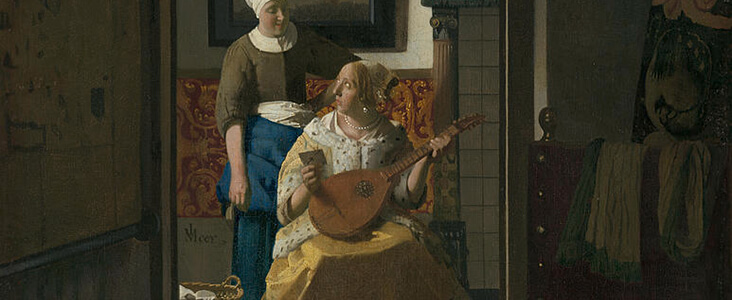
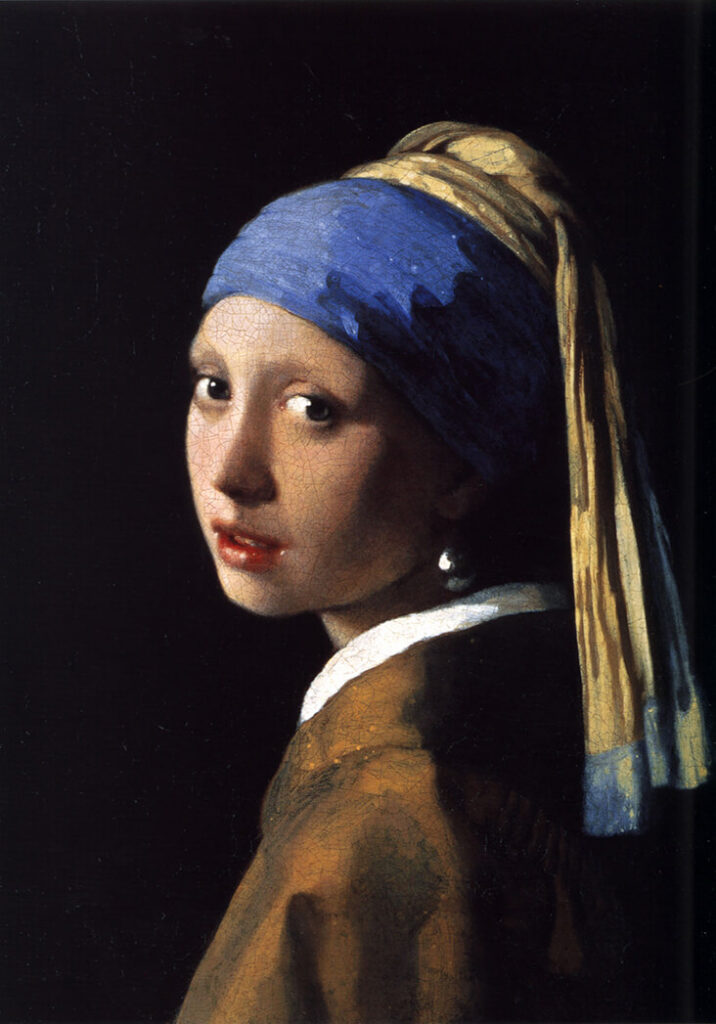
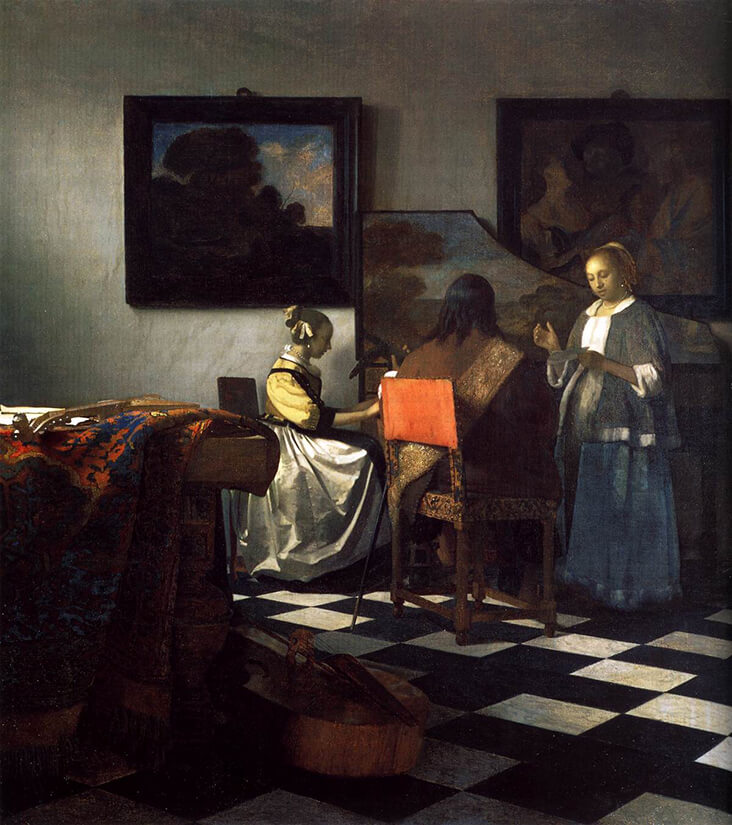
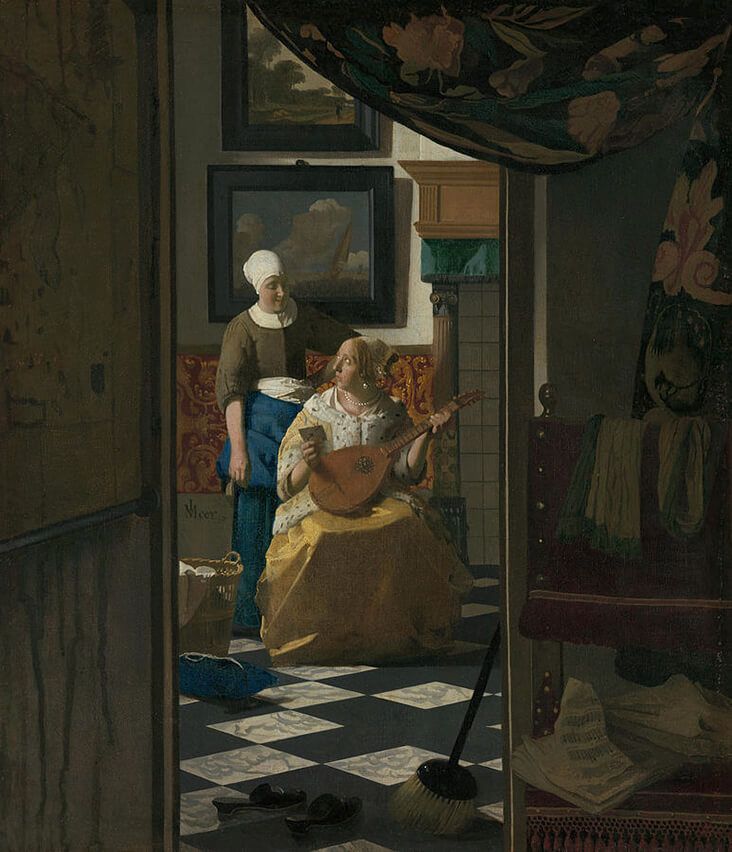
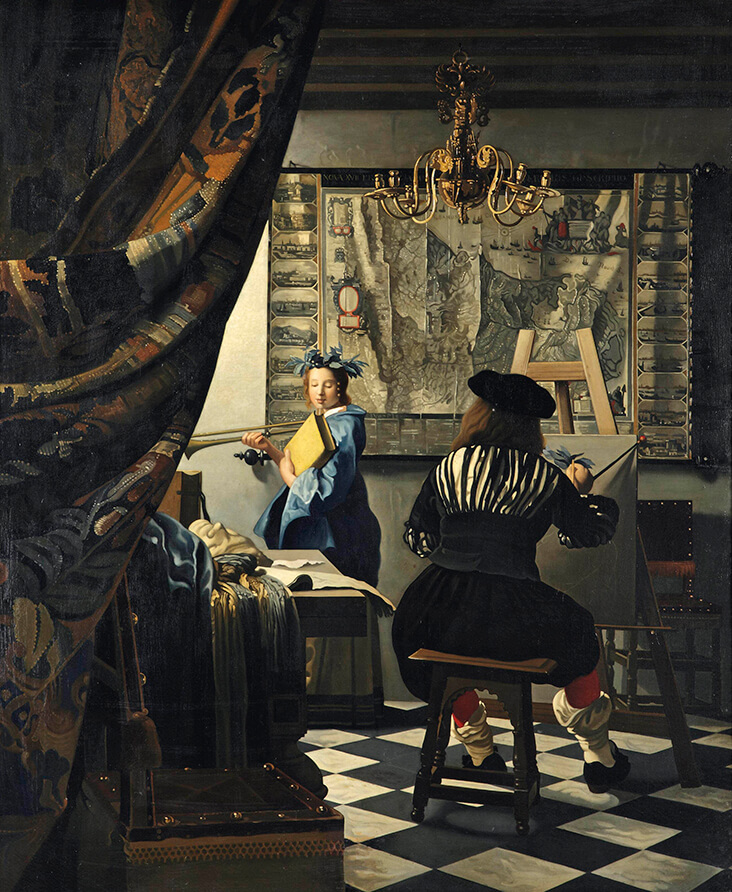
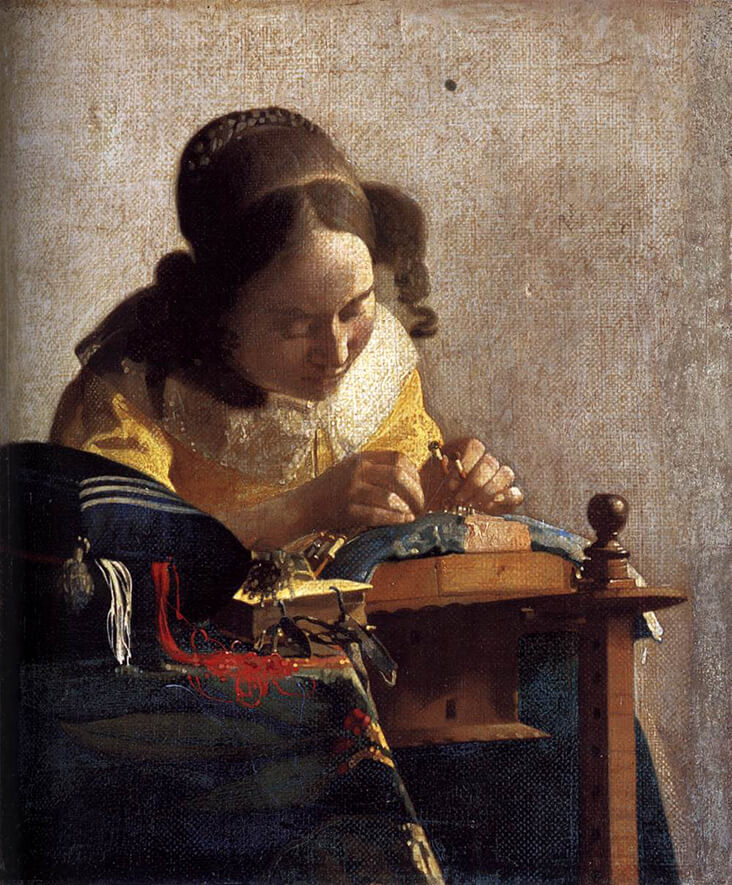





















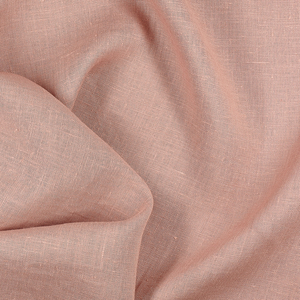


















4 Comments
Ann Rittenberg
What a wonderful piece, Rosie! It’s so knowledgeable yet perfectly accessible. I recently watched the episode of “A Stitch in Time” in which they re-created the green dress worn by the woman in The Arnolfini Portrait. Fascinating, but they did not touch on Vermeer’s background with textiles. Thank you for this!
Rosie Lesso
Thanks so much! It’s such an interesting topic to research…
Corinne Skulmoski
Hi Rosie – I love The Girl With the Pearl Earring. It’s like the man stepped aside & his soul took over. I cannot stop looking at the pearl either, it’s like an eye magnet in that picture. It’s even more intriguing than the real thing. Divinely inspired.
Rosie Lesso
I completely agree – I could look at Vermeer’s paintings all day!